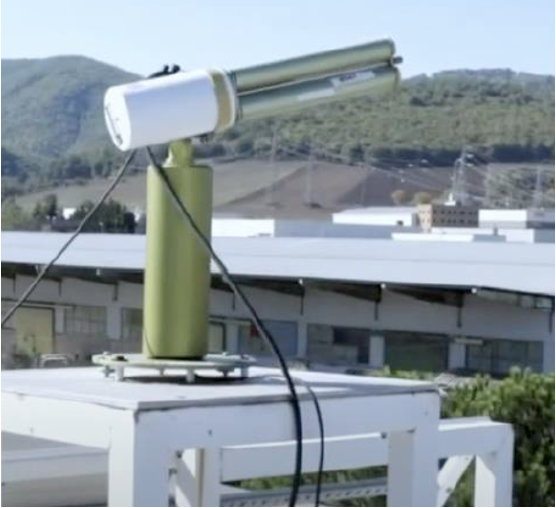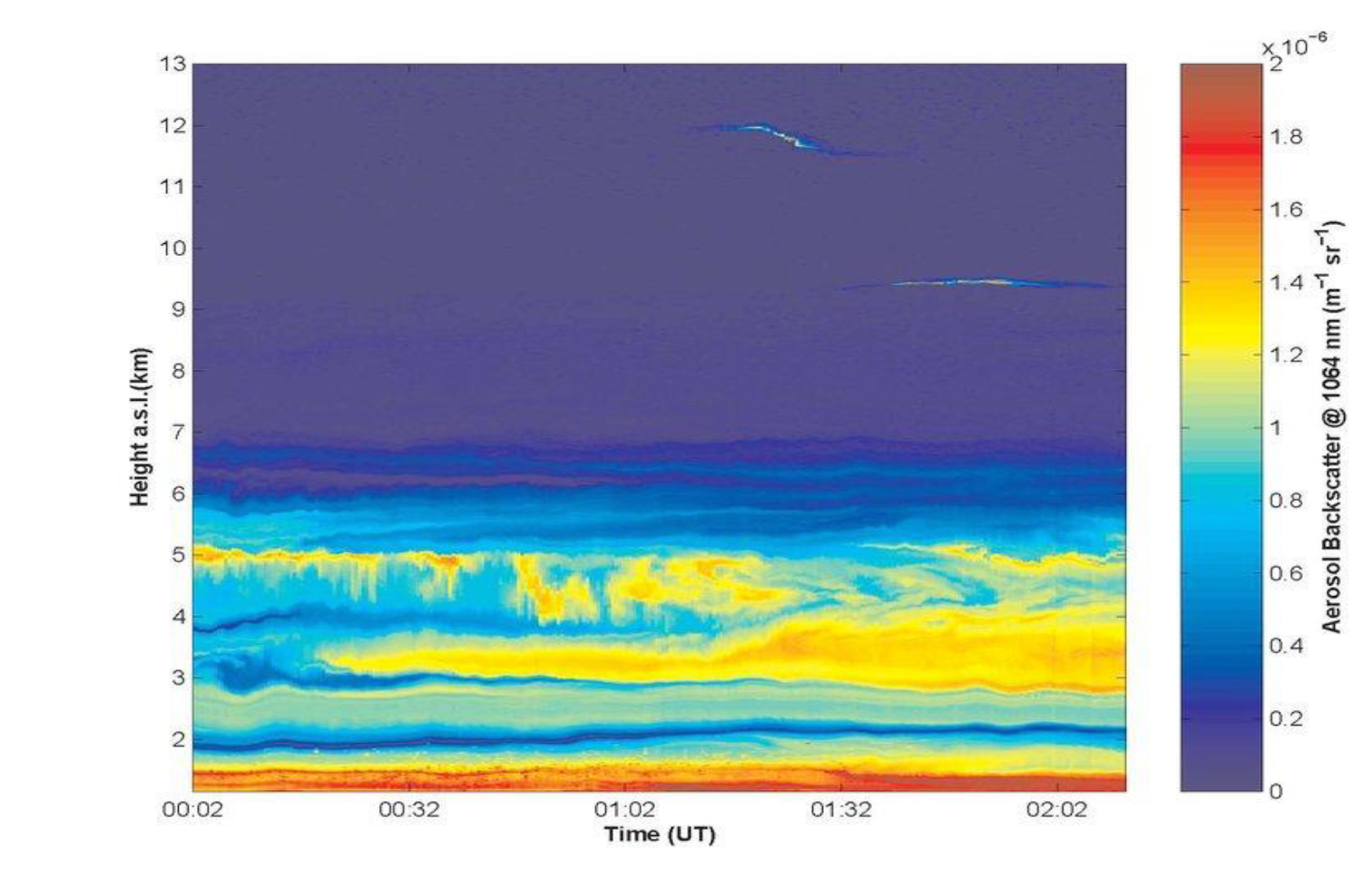Ground-based (remote sensing and in-situ)#
Ground-based observations are important to (i) validate satellite-based observations, (ii) improve retrieval algorithms for retrieved satellite parameters, (iii) evaluate model outputs and (iv) develop new algorithms and methodologies.
Compared to satellite observations, ground-based observations give a higher possibility to control measurements, more strict Quality Assurance (QA) and Quality Control (QC) procedures can be performed and the integration of instruments is more feasible.
There are three main measurement techniques: (i) measurements at the surface, (ii) columnar remote sensing measurements and (iii) Lidar remote sensing. This course provides a data discovery example of each measurement technique:
Measurement at the surface |
Columnar remote sensing |
Lidar remote sensing |
|---|---|---|
Measurements at the surface#
The general concept is to sample the air for collecting particulate on filters or to optically investigate the sample. The following atmospheric composition parameters can be measured with ground-based observations:
Particle size distribution
Organic matter
Sulfate
Chloride
Nitrate
Ammonium
Organice Carbon (OC) / Elemental Carbon (EC)
Brown / black carbon
Particulate Matter (PM) 1, PM2.5, PM10
Volatile Organic Compouns (VOC)
PM10 is in general a good indicator for dust, as dust is associated with coarser / larger particles. Hence, PM10 is expected to increase during dust events. Another indicator is the ratio of PM10 to PM2.5, which can give an indication of a coarse particles dominance. Particulate samples can be collected with gravimetric and optical methods, whereby the gravimetric method is more common.
Gravimetric methods
With the gravimetric method, the mass of particulate below a certain diameter can be measured: e.g. PM10 refers to particulate matter below a diameter of 10 micron. PM2.5 are fine particles and refer to particulate matter below a diameter of 2.5 micron and PM1 are ultrafine particles and refer to a particulate matter with a diameter below 1 micron, respectively.
Optical methods
Optical methods allow the determination of many aerosol optical and physical properties, such as Backscatter coefficient, size distribution, absorption coefficient and organic vs. elemental carbon content (OC/EC).

Fig. 11 Examples of measurement stations sampling the air to collect particulate on filters (Source: , Aerodyne Research (right))#
Strengths and weaknesses of parameters from measurements at the surface
Parameter |
Strengths |
Weaknesses |
|---|---|---|
PM bulk concentrations |
- high spatial density in developed countries |
- not able to distinguish dust from other aerosol types |
PM chemical composition |
- very reliable estimates of dust components |
- expensive and laborious |
Visibility |
- good spatial and temporal coverage |
- visibility reduction due to the presence of hydrometeors (fog, rain, etc.) |
Dust deposition fluxes |
- limited data availability |
|
Dust physical properties |
- standardized measurement techniques |
- variable spatial density |
Networks / Programmes collecting measurements at the surface (selection):
ACTRIS in-situ, EMEP, ESRL, GAW-WDCA, INDAAF, EANET, EIONET, EPA, IMPROVE
Columnar remote sensing measurements#
Columnar remote sensing measurements make use of photometers which point towards the sun and which measure the radiance at different wavelengths. The primary measurements of photometers is Aerosol Optical Depth (AOD). It is retrieved by comparing the solar radiation outside the atmosphere with the molecular absorption by gases in the atmosphere. The observed difference is due to aerosol presence. Sun photometers only operate during daytime. However, advanced instruments are able to use as well moon and star radiation as reference and are able to collect measurements during nighttime as well.

Fig. 12 A sun photometer (CIMEL) installed on the roof of CNR-IMAA measuring the radiance at different wavelengths (Source: CNR-IMAA)#
Through columnar remote sensing measurements, the following parameters can be retrieved:
Aerosol Optical Depth (AOD) at different wavelengths
Angstrom Exponent (AE) is an exponent in the power law that regulates how the AOD changes with the wavelength. The higher the AE, the smaller the particle
Dust AOD (DOD) means that the Angstrom Exponent is below a certain threshold and the Aerosol Optical Depth is higher than a certain threshold. Advanced photometer products provide fine and coarse mode (DOD) measurements
Strengths and weaknesses of parameters from columnar remote sensing measurements
Parameter |
Strengths |
Weaknesses |
|---|---|---|
Dust Optical Depth |
- high spatial density in developed countries |
- different methods (and uncertainty) in dust component evaluation |
Networks / Programmes collecting columnar remote sensing measurements:
AERONET, SkyNet, PFR-GAW
Profiling measurements: Lidar remote sensing#
The principle of lidar measurements is that the instruments send light into the atmosphere and the instruments measure the backscatter that is produced from the atmosphere. There are different techniques in order to collect the backscatter information:
Elastic lidar: only detects the backscatter at the same wavelength of the emitted laser light
Raman lidar: Detection tuned on shift for molecules present in the atmosphere for aerosol extinction measurements
High Spectral Resolution Lidar (HSRL): interferometrically separates the elastic aerosol backscatter from the Doppler broadened molecular contribution
Through Lidar remote sensing, the following aerosol parameters can be measured:
Aerosol backscatter coefficient
Aerosol extinction coefficient (for Raman and HSRL)
Lidar ratio (e.g. extinction to backscatter ratio)
Angstrom exponent (for multiwavelength lidar)

Fig. 13 Example of a collected backscatter signal during a dust event in Potenza, Italy on 22 June 2006 (Source: CNR-IMAA)#
Strengths and weaknesses of parameters from Lidar remote sensing measurements
Parameter |
Strengths |
Weaknesses |
|---|---|---|
Dust Backscatter & extinction profiles |
- high vertical resolution |
- no other depolarization particles considered in the dust attribution |
Dust Mass Concentration profiles |
- high vertical resolution |
- errors of advanced retrieval algorithms still to be quantified |
Networks / Programmes collecting columnar remote sensing measurements:
ACTRIS/EARLINET, AD-net, LALINET, MPLnet, GALION
Take Home Messages#
Dust contribution can be inferred by different techniques and methods
Methods are different and differences have to be taken into account
There are strenghts and weaknesses of each technique
References#
Dust Observation Catalogue: Extensive catalogue that takes into account ground-based measurements, campaign measurements, satellite observations and model data
